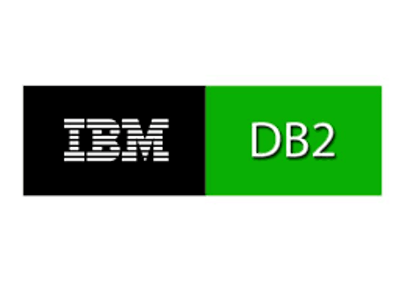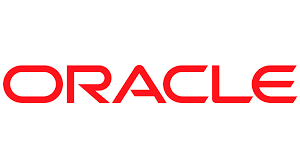DB2 Vs Oracle
DB2:

It is a family of relational database management systems. It was initially commercially released in 1983, and IBM developed the database named DB2. It is a database that follows relational database management system principles. By using DB2, we can fetch the data, analyze it and store it efficiently. DB2 is based on Object-Oriented features and non-relational XML structures. It is a group of related data management products that include data servers developed and marketed by IBM. It is developed on a concept based on SQL, i.e., standard query language on the relational database system, which means DB2 uses SQL queries to retrieve and store the data into the database. We can use DB2 on AS/400 IBM mainframe and personal computers.
DB2 also supports the storage of non-relational formats like XML and JSON DP to is not open-source, but it provides some free distributions it is fully owned by IBM, and if we want to run on large servers should have to pay for the licensing
Features of DB2
The reviews for the product are high because of its ability to work with a sizeable amount of data without affecting the performance by any means. Also, the downtime is very less as per the review of the client. It is also praised for the customer reporting, stability for both hardware and software, which is proven reliable. It also provides excellent storage capabilities and is SQL server compatible.
Let's see some advantages:
DB2 has been around for years and has matured as a robust RDBMS.
1. Powerful Structures Query Language
2. Various Platform support.
3. IBM Support
4. Fetching of data is significantly fast
5. It provides high security
6. It is independent
7. It provides very high concurrency, Allowing multiple applications and users to access the data parallelly and Concurrently.
8. Redundancy is low
9. It provides flexibility with the designs
10 It offers easy access, and user is not required to know the physical relationships of the Database they wish to access
11. It is reliable, secure and offers high availability
12. It can efficiently handle large volumes of data
13. It can work with various operating systems
Disadvantages of DB2
It has a large learning curve for DB2, which requires a skilled team to use at its potential. The tools which are used for queries are quite lacking.
The future of DB2:
In the latest release of DB2, i.e., DB2 11.5 in June 2019, was praised for its AI capabilities. The newly released database is ruined and powered by AI. This can result in the high speed queries execution and its ability to handle natural language querying, designed based on search engines and offering the same user experience.
Oracle Database

It is a relational database management system. It is known as OracleDB or Oracle. It is developed and marketed by the Oracle Corporation. It was developed in 1977 by Lawrence Ellison and other fellow engineers. It is the most popular relational database in the market for storing, retrieving, and organizing data.
It was first designed for enterprise grid computing and data warehousing.
Features of Oracle Database
It provides many exciting features like scalability, high-quality support and can track sophisticated architecture. It is also believed as reliable in less downtime, and applying for the new instances to oracle causes relatively less pain.
Disadvantages of Oracle Database:
As per the review, it shows that it needs an experienced administrator the help to manage it properly. It is costly, also a tool proving that it is out of reach for most start-up businesses.
The Future of Oracle Database
It has been exploring things to have algorithms embedded directly into the microprocessor. It is also working on integrating the product easily with the products like SQL Server and JSON.
| IBM DB2 | Oracle |
| The developer of this database is IBM | The developer of this database is Oracle |
| It was initially released on 1983 | It was initially released in 1980 |
| The latest current release was in June 2019 named as 12.1 | The latest current release was in February 2019 named as 19c |
| It has no concurrency model | It supports concurrency model namely multi version read consistency and non escalating row level locking |
| It supports multi table INSERT | It does not support additional capabilities of data warehousing |
| It supports Index advisory | It supports intelligent advisories Lile MTTR, SQL Tuning Index, memory |
| In DB2 UDB the partitioning methods are hash partitioning and local indexes | It supports Range, list and hash composite partitioning also local and global indexes |
| In DB2 UDB the indexing capabilities are only through B-tress and dynamic bitmap indexes | It supports large variety of indexing schemes |
| It is implemented in Languages like C, C++, Assembly Language and Java language | It is implemented in Languages like C and C++ |
| The server operating systems are as follows AIX, HP_UP, Linux, Windows, Solaris, and z/OS | The server operating systems are as follows AIX, HP_UX, Linux, Windows, and CentOS |
| To access the methods and APIs we can use ADO.NET JDBC, ODBC, XQuery and JSON style queries | To access the methods and APIs we can use JDBC, ODBC, ODP.NET and Oracle call Interface |
| It supports following programming languages C++,JAVA, Perl, PHP, Python, Cobol, C#, C, Delphi, Fortran, Ruby, Visual Basic | It supports following programming languages C, C++, Erlang, Haskell, Java, OCaml, R, Python, Ruby, Scala, Groovy, Clojure, C#, Lisp, JavaScript, Eiffel, Tcl, Visual Basic |
| It supports server side scripts | It supports PL/SQL server side script |
| It supports replication methods | It supports Multi source replication and source replica replications |
| It supports Sharding Partitioning methods | It supports Sharding and horizontal partitioning methods |
| It has no consistency concepts | It supports immediate consistency |